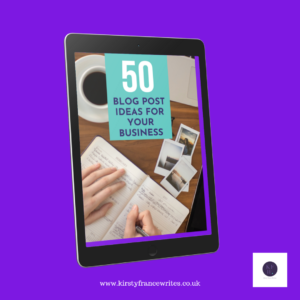
When you sell products online you might think that the images you use are the most important thing. Of course, if your images are rubbish you won’t sell much. Your customers need to be able to see what they’re buying and imagine themselves using it. The thing is, the photos are only one part of that. Your product descriptions take it to the next level. The words you use allow your customers to create their own mental images. They take the photos you’ve used and imagine themselves using your products or handing them over as a gift. It doesn’t just show them what they could have, it allows them to see themselves as if they’ve got it already. When you use product descriptions that conjure up the feelings your customers will experience when they’ve bought something from you, that’s the magic that persuades them to buy. Here’s how to do it.
Include the basics
I shouldn’t need to say this, but a high street retailer recently lost an online sale because their kids’ shoe sizing didn’t tell me whether the shoes would fit my child. I know. Don’t let that happen to you. Include basics like price, size and the materials or ingredients used. Some customers will message you to ask, but most won’t. They’ll just go somewhere that has clearer information.
Talk about benefits
Pretty much every sale ever made happens because the person buying the product can see how it will solve a problem or improve their life. Think about how each product will help your customer. It could give them a tidier house, entertain their children or save them time when they’re trying to get out of the house in the morning. Show them what it would be like if they had this product in their life and they’ll bite your hands off to buy.
Engage their senses
This can be a tricky one, but it’s another element that engages your customer’s imagination. Help them to experience a physical sensation or an emotion. How will that gorgeously soft scarf feel when they wrap it around their neck? Let them imagine the joy on their child’s face when they open the perfect gift on Christmas morning. (Or possibly the early hours if we’re honest.) Letting people see what life will be like when they’ve bought a product increases the chance that they’ll actually buy.
Make it scannable
Some bits of your product descriptions work best as a short paragraph. For others, make a list. If your products have features that are likely to be really important to your customers, make them easy to spot. You might want to highlight safety features, eco-friendly credentials or high quality ingredients. It also makes your product descriptions shorter and easier to read. No-one wants ‘War and Peace’ when they’re just doing a bit of shopping.
Tell a mini story
Telling a mini story isn’t essential to good product descriptions, but it can work really well. For example, if you use materials that have an interesting back story, why not mention it? Talk about the tweed you bought from a family who’ve been making it for a hundred years and how you brought it home to create a handcrafted bag that will hold every working day essential. Tell your customers about the people who create your favourite wine or that extra special cheese. If it taps into something your audience cares about it can work really well.
Do you need help writing your product descriptions? For a limited time only, I’ll write them for you! Get ready for Christmas with brilliant product descriptions that you can use on your website, in your social media posts, emails… pretty much anywhere you like. Click here to book your discovery call to find out more. Or sign up to my mailing list for hints and tips straight to your inbox every month.









